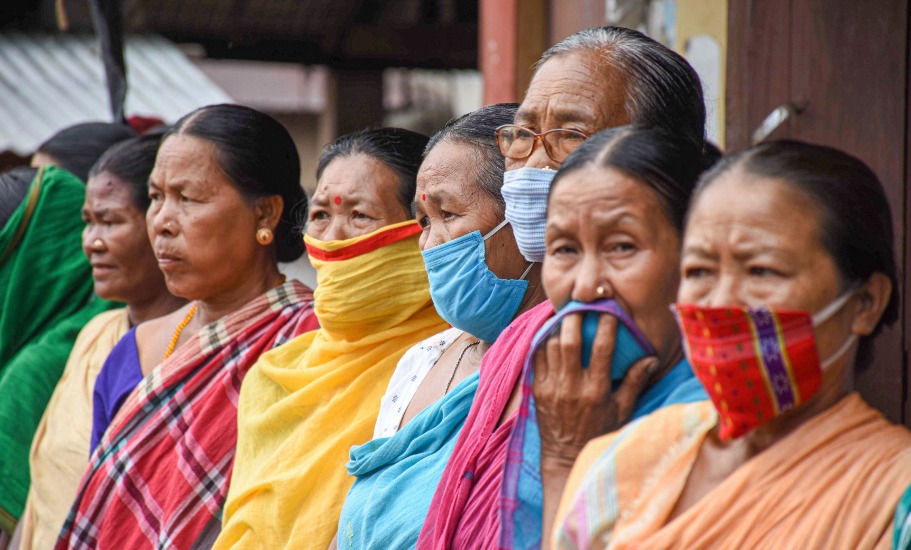
COVID-19: Where does India stand after 40 days of lockdown?

Sunday (May 3) marked the completion of 40 days of nationwide lockdown in India, the strictest so far in the world. And in these 40 days, data shows, India couldn’t really flatten the curve of COVID-19.
There has been a constant rise in number of cases as well as deaths over the past few weeks, though the only positive aspect had been the gradually improving rate of recovery of COVID-19 patients in the country.
On Sunday, the 40th day of lockdown, the country crossed 40,000 cases. This also marks the completion of the second phase of the lockdown, though a third phase of two more weeks is to start from May 4. But where does India stand after two phases of lockdown?
Cases, deaths and recovery
On March 24, the day Prime Minister Narendra Modi announced the first phase of lockdown from that midnight, India had 519 COVID-19 cases and 10 deaths due to the infection. Three weeks later, on April 14, when the second phase was to begin, the figures stood at 10,815 cases and 353 deaths.
However, on May 3, when the second phase of lockdown ends and the third phase is to begin, the total number of cases reported so far across the country stands at 40,263, including 1,306 deaths. Meanwhile, the number of recovered patients also rose to 10,886 on Sunday.
Prime Minister Modi won a lot of praise for declaring the nationwide lockdown on March 24. Various estimates suggest India would have crossed 1.5 million cases by April 15 without the lockdown. The government has also hailed the lockdown as a successful move to prevent the spread of the disease.
Though the lockdown has prevented the spread of the virus to a certain level, it seems we haven’t really succeeded in flattening the curve. Every day, the nation is reporting a new record number of cases, with the latest being on May 2, when the country reported 2,411 cases, the highest single-day spike so far.
Related news: India sees biggest spike in COVID-19 cases, but data indicates hope
Recovery rate, which is the number of patients recovering from the disease per hundred infected persons, is now the only ray of hope for the country. The rate of recovery was 7.7 per cent on March 4 and it improved to 11 per cent on April 14. Currently, it stands at 26.5 per cent, which shows a gradual improvement.
Currently, the five worst-affected states in the country are Maharashtra (12,296 cases), Gujarat (5,054 cases), Delhi (4,122 cases), Rajasthan (2,882 cases) and Madhya Pradesh (2,788 cases).
The testing game
This Sunday marked another achievement for India. As per India’s top medical body, Indian Council of Medical Research (ICMR), the nation crossed a million tests on Sunday morning. On April 1, nearly two months since the first case was reported, India had conducted 4,300 tests per day.
However, this rate of testing has since skyrocketed nearly 17 folds to reach 75,000 per day. Further, the Union health ministry has said that it has a target of conducting one lakh tests per day in coming days.
Currently, 421 labs across the country are equipped to conduct COVID-19 tests. This includes 310 government labs and 111 private labs, as on May 2. Further, 58 new laboratories are waiting for government approval to begin testing.
The government had ordered to stop rapid antibody testing on April 17, citing discrepancy in the results of the test kits procured from China. Therefore, the government is now relying only on real-time RT PCR (Reverse transcription-polymerase chain reaction) tests for the detection of COVID-19 cases.
India has reported around 40,000 cases after conducting a million tests. The US, meanwhile, had reported 1,64,620 cases and Germany 73,522 cases after they conducted one million tests. Spain, Turkey and Italy reported 2,00,194, 1,17,589 and 1,52,271 cases respectively after reaching the one million tests mark.
Meanwhile, the recovery rate seems to be very low as deaths and recoveries lag by at least 2.5 weeks to a month as compared to the infections. This means it takes at least over two weeks for a case to recover since it is first reported, while a death can be reported any time after the case has been confirmed. Thus, recovered cases will eventually add up to a much higher figure than what it is today. The buffer in between the recovered cases and fatalities is the active cases, of which, a majority can be expected to recover, given the current death rate.
Medical infrastructure
The government used the lockdown period to ramp up medical infrastructure in the country, and prepare for a large influx of cases in the next few weeks. The most affected city, Mumbai, has constructed two makeshift facilities on huge exhibition grounds in Goregaon and Bandra.
Odisha too has constructed such makeshift hospitals for COVID patients. Tamil Nadu and Kerala have also converted some of its wards into dedicated COVID-19 facilities to ensure treatment to all the patients. The Railways also converted a few of its trains into quarantine facilities for the patients.
Migrant worker crisis
The migrant workers are the worst affected due to the lockdown. With no work, money or food security, many of the workers had begun walking towards their hometowns in different faraway states. This mass exodus of migrants was one of the major setbacks of the lockdown.
In the second phase of the lockdown, the government assured travel arrangements for them and the first ‘Shramik Special’ train left with migrant workers from Hyderabad to Jharkhand’s Hatia on May 1. The government announced more trains for ferrying the stranded migrants. Bihar, Jharkhand, Uttar Pradesh, and West Bengal are likely to see a huge influx of migrants due to this.
https://thefederal.com/health/interactive-know-the-coronavirus-stats-here/

